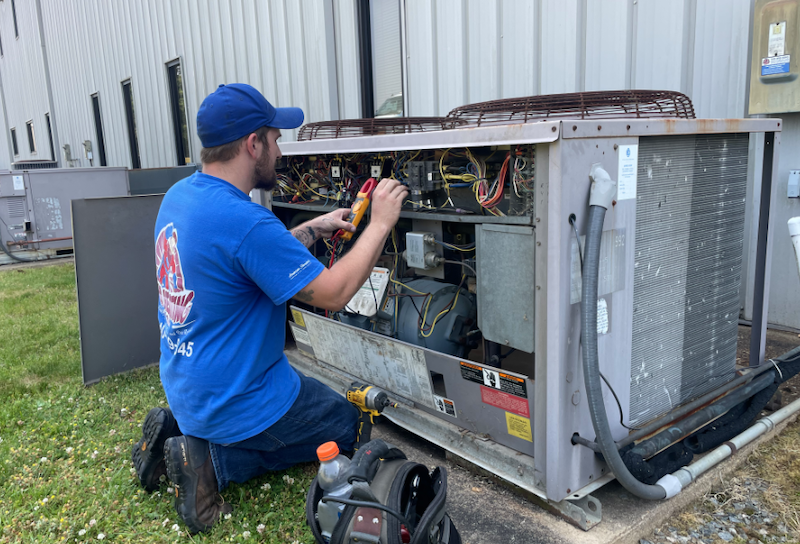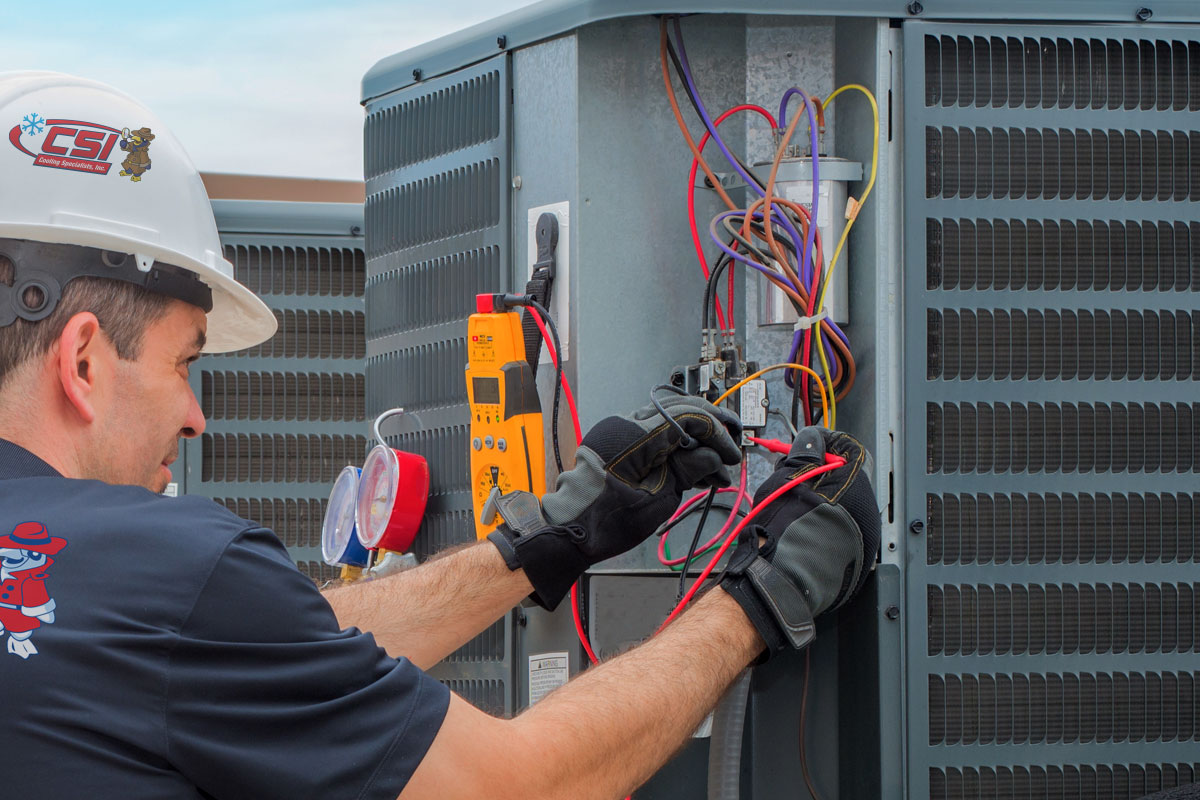Have you ever asked yourself why a/c installment in skyscrapers presents unique obstacles?
The complexity exceeds simply cooling down the spaces efficiently. From maneuvering restricted room restraints to resolving vertical distribution challenges, each facet requires careful preparation.
But what about the structural factors to consider and making certain ease of access to electrical power for these systems?
These are simply a few pieces of the puzzle that make tackling air conditioning setup in high-rise buildings a multifaceted endeavor.

Trick Takeaways
- Critical devices placement and sound control are essential in high-rise AC setups.
- Effective ductwork routing and upkeep access ensure optimal a/c performance.
- Safety, weight distribution, and adherence to building codes are vital for structural integrity.
- Power efficiency, ease of access, and seamless integration improve air conditioning system capability in high-rise buildings.
Space Restraints
When setting up cooling in high-rise buildings, you may experience area constraints that call for careful planning and ingenious solutions. Restricted accessibility to particular areas can pose a difficulty throughout setup. To tackle this, customized tools and creative maneuvering may be necessary to navigate via tight spaces and reach the marked areas for setting up the cooling units.
Furthermore, in high-rise buildings, noise control is important to guarantee the convenience and well-being of owners. The confined rooms and proximity of property units in these buildings amplify the influence of sound produced by a/c systems. Implementing soundproofing actions, using quieter devices, and strategic positioning of elements can aid alleviate sound interruptions for locals.
Vertical Distribution Difficulties
Discovering the intricacies of skyscrapers, specifically with regards to vertical circulation, presents unique challenges for a/c installation. Ductwork challenges are prominent in high-rise frameworks, where routing ducts up and down with multiple floors can be intricate. Setup logistics end up being essential, as coordinating the positioning of ductwork and equipment in such a way that warranties effective air movement and temperature level control throughout the building is paramount.
Upkeep gain access to is another substantial concern when it comes to vertical circulation in skyscrapers. Making certain that cooling and heating systems are quickly available for regular upkeep and repair work is important for long-term capability. Additionally, the logistics of tools transport to greater floors pose a challenge. ac not turning on Relocating hefty air conditioning devices, ductwork components, and other materials up upright distances requires cautious preparation and sychronisation to ensure safety and security and performance.
Architectural Considerations
Thinking about the architectural integrity of high-rise buildings is necessary when preparing cooling installations. High-rise buildings are designed to sustain certain weights, and adding a/c systems can impact the general weight circulation. It's critical to follow building codes to make sure that the added weight from the cooling and heating units doesn't endanger the structure's structural security. Building codes outline the maximum allowed tons for different areas of the building, including floors and walls, to prevent overloading.

Correct weight distribution is very important to prevent irregular tension on the structure's framework, which can result in structural issues with time. Cooling and heating systems need to be strategically put to disperse their weight uniformly and decrease any prospective stress on specific areas. Engineers have to very carefully examine the structure's load-bearing capacity and layout the air conditioning setup appropriately to make sure that it meets security standards and governing demands.
Electrical Power Availability
To confirm the successful installation of a/c systems in high-rise buildings, reviewing the access of electric power is critical.
When reviewing the electrical power accessibility for a/c in high-rise buildings, think about the following:
- Closeness to Source Of Power: See to it that the air conditioning devices lie near source of power to decrease power loss and guarantee reliable operation.
- Remote Ability: Go with systems that offer push-button control attributes, enabling hassle-free surveillance and change of the air conditioning systems from a distance.
- Energy Efficiency Scores: Focus on a/c systems with high power performance rankings to lower overall power intake and reduced functional costs.
- Back-up Power Solutions: Implement backup power remedies like generators or battery back-ups to ensure continual operation of the a/c systems throughout power failures.
A/c System Combination
When incorporating a/c systems right into skyscrapers, coordinate flawlessly with existing framework for peak efficiency. Guarantee system compatibility by extensively reviewing the building's format and existing heating and cooling configuration. During the installation procedure, focus on efficient assimilation to maximize the general efficiency of the a/c system.
To attain successful a/c system assimilation, work together very closely with designers, engineers, and professionals to address any kind of possible challenges. Conduct a detailed evaluation of the structure's ventilation, ductwork, and control systems to make sure smooth compatibility with the brand-new heating and cooling tools. This proactive method can help prevent costly rework and delays throughout the installation phase.
Integrating HVAC systems in skyscrapers calls for precise preparation and precise execution to assure peak functionality. Applying advanced modern technology and energy-efficient parts can even more improve system efficiency and sustainability. By focusing on seamless integration and system compatibility, you can develop a comfortable interior atmosphere while making best use of power effectiveness in skyscraper structures.
Regularly Asked Concerns
Are There Any Details Rules or Codes That Skyscraper Must Comply With When Installing Air Conditioning Solutions?
When setting up a/c systems in high-rise buildings, regulations and safety conformity are necessary. Particular codes dictate just how these systems ought to be set up to ensure the safety and security of residents. Conformity with these regulations is crucial for the correct functioning of the cooling devices and to prevent prospective dangers.
It is necessary to comply with these guidelines thoroughly to ensure a risk-free and efficient cooling system within the structure.
What Are Some Typical Solutions for Sound Control in A/c Equipments in Skyscraper?
To reduce noise in cooling systems in high-rise buildings, think about soundproofing materials and calculated placement to moisten resonances. Opt for energy-efficient versions with quieter operation.

Regular upkeep checks and timely fixings can protect against loud malfunctions. Furthermore, making use of variable speed innovation can reduce sound levels during low-demand periods.
How Do Extreme Climate Condition, Such as High Winds or Lightning Strikes, Impact the Setup and Operation of Cooling Equipments in High-Rise Buildings?
Severe weather conditions such as high winds or lightning strikes can greatly impact the setup and operation of air conditioning systems in high-rise buildings. These climate aspects can present structural difficulties, impacting the stability and efficiency of the systems.
When facing such conditions, it's important to consider the strength of the structure's facilities and the sturdiness of the cooling and heating parts to assure ideal operating and safety.
Exist Any Kind Of Unique Factors To Consider for Including Smart or Energy-Efficient Technologies Into A/c Equipments in Skyscraper?
When considering incorporating smart or energy-efficient modern technologies into cooling systems in skyscrapers, there are some unique considerations to keep in mind. Assimilation challenges may occur when connecting different systems, and adjusting these modern technologies to work properly in an upright environment can be challenging.
Nevertheless, energy-saving technologies provide excellent possible for decreasing expenses and ecological effect. It is very important to very carefully prepare and carry out these remedies to optimize their benefits.
What Are the Maintenance Requirements for A/c Equipments in High-Rise Buildings, and How Usually Should They Be Serviced?
To maintain your a/c systems in high-rise buildings running smoothly, normal upkeep is key.
Maintenance frequency relies on elements like use and system complexity. Generally, it's advised to have your air conditioning devices inspected at least annually by a specialist technician.
This regular upkeep not just assures top performance however likewise helps in preserving energy performance, conserving you cash in the future.
Conclusion
On the whole, installing air conditioning in high-rise buildings offers unique difficulties due to area constraints, upright distribution challenges, architectural factors to consider, electric power availability, and cooling and heating system combination.
It needs careful preparation and sychronisation to make sure the system works effectively and efficiently in such complicated settings.
By attending to these challenges head-on and working with skilled experts, structure owners can guarantee that their owners stay comfortable and cool also in the tallest of buildings.
